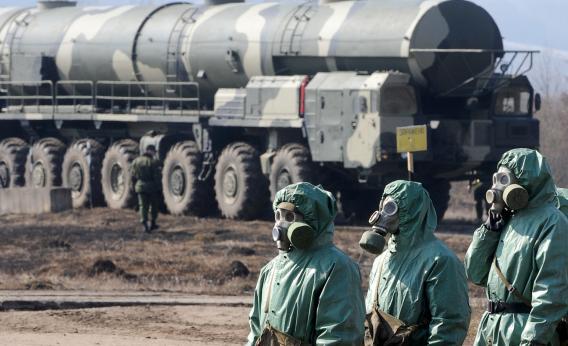Given Russia’s newfound role as the aspiring facilitator of the destruction of Syria’s chemical weapons, it’s an interesting time to take a look at the country’s own record on this process.
Russia became a party to the Chemical Weapons Convention in 1997 and has been gradually destroying its stockpiles since then, but it’s been taking a while. The treaty originally required Russia to destroy its stockpiles completely by 2007, but the Kremlin announced in 2001 it would be unable to meet that goal and would need until at least 2012. Only about 62 percent of its supply was destroyed by 2012, and the deadline was pushed back again to 2015.
In April of this year, the Russian media reported that 2020 was now considered a likelier date for completely finishing off the country’s original stockpile of at least 40,000 tons of “chemical nerve, blister and choking agents.” (U.S. Defense Secretary Chuck Hagel even suggested last week that Russia may have been some the source of some of Assad’s chemical weapons.)
Assad’s stockpiles probably aren’t that big, but they’re widely dispersed and in the midst of a war zone, it’s probably going to take a lot longer than a few days or even a few weeks to have them all rounded up and on their way to the incinerator—even if we assume everyone is being completely sincere about all of this.
And yes, Russia’s not alone in dragging its feet on its treaty obligations. The United States has also blown through several deadlines and still has more chemical weapons of its own to destroy.
